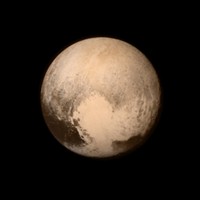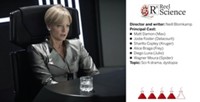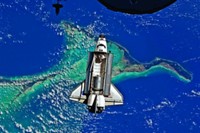Advertisement
Grab your lab coat. Let's get started
Welcome!
Welcome!
Create an account below to get 6 C&EN articles per month, receive newsletters and more - all free.
It seems this is your first time logging in online. Please enter the following information to continue.
As an ACS member you automatically get access to this site. All we need is few more details to create your reading experience.
Not you? Sign in with a different account.
Not you? Sign in with a different account.
ERROR 1
ERROR 1
ERROR 2
ERROR 2
ERROR 2
ERROR 2
ERROR 2
Password and Confirm password must match.
If you have an ACS member number, please enter it here so we can link this account to your membership. (optional)
ERROR 2
ACS values your privacy. By submitting your information, you are gaining access to C&EN and subscribing to our weekly newsletter. We use the information you provide to make your reading experience better, and we will never sell your data to third party members.
Physical Chemistry
‘Gravity’
Space thriller explores the solitude of exploration and the strength of the human spirit
by Jovana J. Grbić
September 27, 2013
| A version of this story appeared in
Volume 91, Issue 39

Space movies, such as “Gravity,” are almost always grandiose in their storytelling aspirations. The enormity of space, the raw power of a space shuttle, the existential quandary of whether we are alone in a vast universe, and (as is the case in “Gravity”) an inevitable crisis that must be resolved to steer astronauts to safety.
There is one critical detail, however, that most space films fail to convey visually—solitude. “Gravity” gets it right, giving viewers an insight into the loneliness. Catherine Coleman, who spent thousands of hours aboard the shuttle Columbia and the International Space Station, and who was a primary adviser to lead actress Sandra Bullock, recounts isolation—spatial separation, physical movements, zero gravity, and a distant Earth—as the biggest challenge and reward an astronaut faces. With a story line centered on one brave scientist in crisis, “Gravity” becomes a virtual spaceflight for the audience. Through this vista, we perceive how beautiful, terrifying and full of possibility space truly is.
In director Alfonso Cuarón’s “Gravity,” we are introduced to Mission Specialist Ryan Stone (Bullock), a scientist turned novice astronaut sent as part of a team to repair the Hubble Space Telescope. We also meet ebullient, assertive veteran Mission Commander Matt Kowalsky (Clooney) out on his last voyage in space. During a routine maintenance operation, an intentional demolition of an obsolete satellite sends debris hurtling through space right in their direction. With catastrophic damage to their shuttle, Kowalsky and Stone are the sole survivors and have no access to NASA Mission Control. A series of tragic consequences soon leave Stone alone, relying on her instincts to attempt a last-ditch escape via an international space station—her only hope for returning to Earth.
“Gravity” is a technical, pinpoint-accurate movie that relied on input from NASA astronauts and physicists. Michael Massimino, a Hubble service specialist who completed missions on the space shuttles Columbia and Atlantis, provided insight into space travel and space walking. In addition, Clooney and Bullock spent hours training for zero-gravity conditions, and the film’s artistic directors and technical crew built special light boxes and green screens to render space from all angles with the power of computer-generated imagery, better known as CGI. “Even if [“Gravity”] was a work of fiction,” Cuarón remarked at a press junket last week, “we wanted everything, especially the physics of space, to be as accurate as possible.”
Despite the thrilling story and technical fidelity, there is a stylistic beauty to “Gravity” rooted in simplicity, a silent abyss in the midst of intergalactic chaos. Cuarón’s desire to showcase space as a central piece of his movie is reflected in every frame. He perceived “Gravity” to be an existential film about “a woman drifting into the void and confronting adversity,” he said. Rather than the constraints of a time and place, however, the celestial bodies are the proof of life that inspires her to keep going.
“I used to think that astronauts wanted to go into space for the thrill and adventure,” Bullock reflected. “When I spoke to them, though, I was so moved by their deep love of that world and the beauty of Earth from their perspective. It’s amazing to realize how small we are in this massive universe.” These are the very details that are magnified as the story unfolds: a tiny human being drifting in the enormity of space, a comforting human voice, a teardrop defying gravity, the magic of another sunrise viewed from millions of miles away.
Jovana J. Grbić, Ph.D., is the founder of Los Angeles-based ScriptPhD, specializing in science communication in entertainment, advertising, and media. She tweets as @ScriptPhD.
Far more than just a creative interpretation of space, “Gravity” is that rare piece of art that can inspire and entertain. As Massimino reminded the press during the preview screening, centers such as NASA and the Jet Propulsion Laboratory in Pasadena, Calif., are still doing important research as part of a space program that is very much thriving and as critical as it has ever been. “Gravity” is a magical way to bring the masses into space and inspire a new generation of support for NASA. “This movie will make folks understand what we do and why it is so important,” Massimino said.
As a love letter to space exploration and the sheer strength of human tenacity, “Gravity” exceeds these expectations.





Join the conversation
Contact the reporter
Submit a Letter to the Editor for publication
Engage with us on Twitter